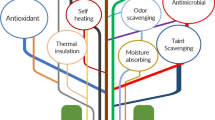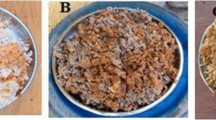Abstract
Kombucha is a beverage that is prepared by fermenting sweetened black tea using a tea fungus, which is a symbiotic culture of acetic acid bacteria and yeasts. In the present study, cactus pear juice was used as a substrate for kombucha fermentation in order to develop a new beverage with enhanced nutritional properties. Changes in chemical and microbiological parameters of the fermented juice were determined during fermentation. The growth of microflora induced a reduction in pH from 5.1 to 3.5 and a 23 % increase in total phenol content after 6 days of fermentation. The antioxidant potential of the beverage was also improved, reaching 81 % and 65 % as determined, respectively, by 2,2-diphenyl-1-picrylhydrazyl (DPPH) and 2,2'-azino-bis (3-ethylbenzothiazoline-6- sulfonic acid) (ABTS) radical scavenging assays. The improved antioxidant capacity was attributed to betalains and to certain metabolic products formed during the fermentation process. Furthermore, the fermented juice showed antimicrobial activity against the tested Gram-positive (Staphylococcus aureus ATCC 6538, Bacillus cereus ATCC 11778, Staphylococcus epidermidis ATCC 12228 and Enterococcus faecalis ATCC 10541) and Gram-negative bacteria (Escherichia coli ATCC 10536, Klebsiella pneumoniae ATCC 10031, and Pseudomonas aeruginosa ATCC 9027), which was attributed to its acetic acid content. Sensory evaluation of fresh juice and juice after 6 and 12 days of fermentation by a taste panel showed high acceptability of the juice after the first 6 days of fermentation, as the cactus pear juice taste qualities were still present, without the higher acidity that some panelists found unacceptable after longer fermentation.



Similar content being viewed by others
References
Adams MR (1985) Vinegar. In: Wood BJB (ed) Microbiology of fermented foods, Vol. 1. Elsevier, New York, pp 1–48
Castellar MR, Obón JM, Alacid M, Fernández-López JA (2003) Color properties and stability of betacyanins from Opuntia fruits. J Agric Food Chem 51:2772–2776
Cay YZ, Corke H (1999) Amaranthus betacyanin pigments applied in model food systems. J Food Sci 64:869–873
Chu SC, Chen C (2006) Effects of origins and fermentation time on the antioxidant activities of kombucha. Food Chem 98:502–507
Dehbi F, Hasib A, Tilaoui M, El Batal H, Zaki N, Ouatmane A, Jaouad A, Zyad A (2013) Bioactive constituents, antioxidant activity and in vitro cancer cell cytotoxicity of Moroccan prickly pear (Opuntia ficus-indica L.) juices. J Nat Sci Res 3(14):12–20
Delgado-Andrade C, Rufian-Henares JA, Morales FJ (2005) Assessing the antioxidant activity of melanoidins from coffee brews by different antioxidant methods. J Agric Food Chem 53(20):7832–7836
Dufresne C, Farnworth E (2000) Tea, kombucha and health: a review. Food Res Int 3:409–421
Fernandez LJ, Almela JA (2001) Application of high-performance liquid chromatography to the characterization of the betalain pigments in prickly pearfruits. Arch Invest Med 14(4):437–443
Fernández LJ, Almela L, Obón J, Castellar R (2010) Determination of antioxidant constituents in cactus pear fruits. Plant Foods Hum Nutr 65:253–259
Feugang JM, Konarski P, Zou D, Stintzing FC, Zou C (2006) Nutritional and medicinal use of Cactus pear (Opuntia spp.) cladodes and fruits. Front Biosci 11:2574–2589
Frank GW (1995) Kombucha - healthy beverage and natural remedy from the Far East. Wilhelm Ennsthaler, Austria
Galati EM, Mondello MR, Giuffrida D, Dugo G, Miceli N, Pergolizzi S, Taviano MF (2003) Chemical characterization and biological effects of Sicilian Opuntia ficus-indica (L.) Mill. fruit juice: antioxidant and antiulcerogenic activity. J Agric Food Chem 51:4903–4908
Goh WN, Rosma A, Kaur B, Fazilah A, Karim AA, Bhat R (2012) Fermentation of black tea broth (Kombucha): I. Effects of sucrose concentration and fermentation time on the yield of microbial cellulose. Int Food Res J 19(1):109–117
Greenwalt CJ, Ledford RA, Steinkraus KH (1998) Determination and characterization of the antimicrobial activity of the fermented tea kombucha. Food Sci Technol 31:291–296
Greenwalt CJ, Ledford RA, Steinkraus KH (2000) Kombucha, the fermented tea: microbiology, composition, and claimed health effects. J Food Prot 63:976–981
Jackman RL, Smith JL (1996) Anthocyanins and betalains. In: Hendry GAF, Houghton JD (eds) Natural Food Colourants. Chapman & Hall, London, pp 244–309
Jayabalan R, Marimuthu S, Swaminathan K (2007) Changes in content of organic acids and tea polyphenols during kombucha fermentation. Food Chem 102(1):392–398
Liu CH, Hsu SH, Lee FL, Liao CC (1996) The isolation and identification of microbes from fermented tea beverage, Haipao, and their interactions during Haipao fermentation. Food Microbiol 13:407–415
Livrea MA, Tesoriere L (2009) Antioxidative effects of cactus pear (Opuntia ficus-indica (L.)) Mill. fruits from Sicily and bioavailability of betalain components in healthy humans. Acta Hortic 811:197–204
Malbaša RV, Lončar ES, Kolarov JS, Vitas, Čanadanović-Brunet JM (2011) Influence of starter cultures on the antioxidant activity of kombucha beverage. Food Chem 127(4):1727–1731
Mayser P, Fromme S, Leitzmann C, Gruender K (1995) The yeast spectrum of tea fungus kombucha. Mycose 38(7–8):289–295
OIV (2010) Compendium of international methods of analysis - OIV Microbiological analysis of wines and musts. International Organisation of Vine and Wine, Paris
Park EH, Kahng JH, Lee SH, Shin KH (2001) An anti-inflammatory principle from cactus. Fitoterapia 72(3):288–290
Piga A (2004) Cactus pear: a fruit of nutraceutical and functional. J Prof Assoc Cactus Dev 6:9–22
Sáenz C (2000) Processing technologies: an alternative for cactus pear (Opuntia spp.) fruits and cladodes. J Arid Environ 46:209–225
Sawaya WN, Khatchadourian HA, Safi WM, Al-Hammad HM (1983) Chemical characterization of prickly pear pulp, Opuntia ficus-indica, and the manufacturing of prickly pear jam. J Food Technol 18:183–193
Sepúlveda E (1998) Cactus pear fruit potential for industrialization. In: Saenz C (ed) Proceedings of the International Symposium: Cactus pear and nopalitos processing and uses, Santiago, Chile, pp 17–21
Sreeramulu G, Zhu Y, Knol W (2000) Kombucha fermentation and its antimicrobial activity. J Agr Food Chem 48:2589–2594
Steinkraus KH, Shapiro KB, Hotchkiss JH, Mortlock RP (1996) Examinations on antibiotic activity of tea fungus/Kombucha beverage. Acta Biotechnol 16:199–205
Stintzing FC, Herbach KM, Mosshammer MR, Carle R, Yi W, Sellapan S, Akoh CC, Bunch R, Felker P (2005) Color, betalain pattern and antioxidant properties of cactus pear (Opuntia spp.) clones. J Agric Food Chem 53(2):442–451
Teoh AL, Heard G, Cox G (2004) Yeast ecology of Kombucha fermentation. Int J Food Microbiol 95(2):119–126
Zafra-Rojas QY, Cruz-Cansino N, Ramírez-Moreno E, Delgado-Olivares L, Villanueva-Sánchez J, Alanís-García E (2013) Effects of ultrasound treatment in purple cactus pear (Opuntia ficus-indica) juice. Ultrason Sonochem 20:1283–1288
Zou DM, Brewer M, Garcia F, Feugang JM, Wang J, Zang R, Liu H, Zou C (2005) Cactus pear: a natural product in cancer chemoprevention. Nutr J 4:25–36
Acknowledgments
The authors wish to acknowledge the Ministry of Higher Education and Scientific Research for facilitating this work.
Author information
Authors and Affiliations
Corresponding author
Rights and permissions
About this article
Cite this article
Ayed, L., Hamdi, M. Manufacture of a beverage from cactus pear juice using “tea fungus” fermentation. Ann Microbiol 65, 2293–2299 (2015). https://doi.org/10.1007/s13213-015-1071-8
Received:
Accepted:
Published:
Issue Date:
DOI: https://doi.org/10.1007/s13213-015-1071-8




